Key takeaways:
- Feminist fashion serves as a powerful form of self-expression, challenging societal norms and encouraging individuality.
- Historical movements like the suffragette struggle and second-wave feminism illustrate the deep roots of feminist fashion as a tool for liberation.
- Influential designers such as Vivienne Westwood and Stella McCartney merge fashion with activism, promoting sustainability and inclusivity.
- Personal experiences and social circles significantly impact individual fashion choices and the development of a feminist wardrobe.
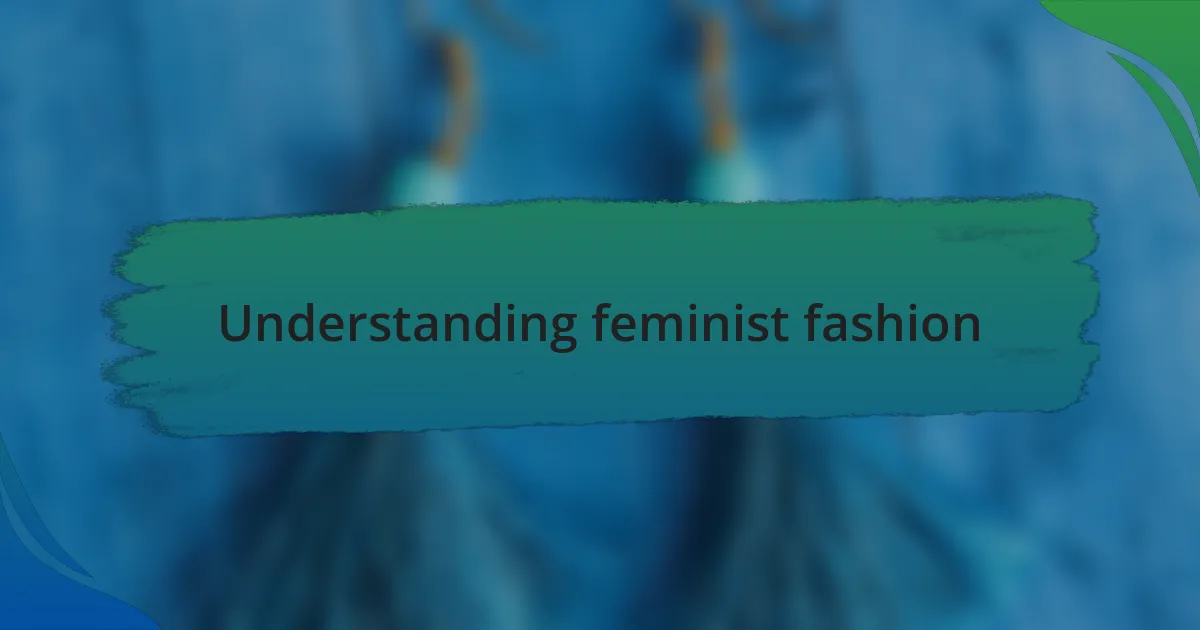
Understanding feminist fashion
Feminist fashion is more than just a style; it’s a form of self-expression and resistance. I remember attending a rally where women wore T-shirts emblazoned with powerful slogans. Those shirts didn’t just serve as garments; they were messages, reminding us of our strength and unity.
The beauty of feminist fashion lies in its ability to challenge societal norms. When I see someone wearing clothing that defies traditional gender expectations, it inspires me. Have you ever felt empowered by an outfit that seemed to say, “I own my identity”? That’s what feminist fashion embodies: a celebration of individuality that encourages us to embrace who we truly are.
Fashion has historically been a battleground for women’s rights, representing both oppression and liberation. I often think about how my mother fought against rigid dress codes in her workplace, choosing to wear bold prints and vibrant colors defiantly. It’s this rich tapestry of personal stories that allows feminist fashion to resonate, connecting us through shared experiences and aspirations.

Historical context of feminist fashion
Feminist fashion has deep roots that intertwine with the waves of feminism throughout history. I often think back to the suffragette movement of the early 20th century when women started wearing white dresses adorned with green and purple sashes to symbolize their fight for voting rights. Each piece they wore wasn’t just clothing; it was a banner of their struggle and a statement of their determination.
As the decades rolled on, the 1960s and 70s saw a vibrant shift with the rise of second-wave feminism, where clothing became a tool for liberation. I can’t help but smile when I remember the fashion of that era: miniskirts and bell-bottoms worn proudly, representing a rebellion against the constraints of traditional femininity. Dressing in a certain way was a bold declaration of autonomy—who hasn’t felt that surge of confidence when slipping into something that truly represents them?
Fast forward to today, and feminist fashion continues to evolve. I often wonder how contemporary designers draw inspiration from those pivotal moments. Are they channeling the fierce spirit of their predecessors when they create pieces that prioritize inclusivity and diversity? The dialogue between history and fashion is ongoing, and every garment carries the legacy of those early trailblazers, urging us to carry the torch forward.

Key figures in feminist fashion
When I think of key figures in feminist fashion, one name that often comes to mind is Vivienne Westwood. Her punk aesthetic in the 1970s married rebellion with high fashion, making a bold statement against the status quo. I remember thumbing through her collections and feeling an electrifying sense of empowerment—here was a designer who unapologetically challenged societal norms.
Then there’s the impact of designers like Stella McCartney, who prioritize sustainability alongside their feminist ethos. I find her commitment to ethical fashion especially inspiring; it connects the fight for women’s rights with the fight for our planet. Isn’t it fascinating how fashion can advocate for multiple causes simultaneously? Her work reminds us that the clothes we wear can reflect our values—personal statements that extend beyond aesthetics.
Lastly, I can’t forget about feminist icon and fashion designer, Issey Miyake, whose innovative designs blurred gender lines and made clothing accessible to all. His creations have a timeless quality that resonates with the idea that fashion should be inclusive. I often ponder how his vision encourages us to rethink the way we express ourselves—can clothing be a canvas for our true selves? The bold choices made by these designers inspire not just a look, but a movement, encouraging us to embrace our unique identities without hesitation.
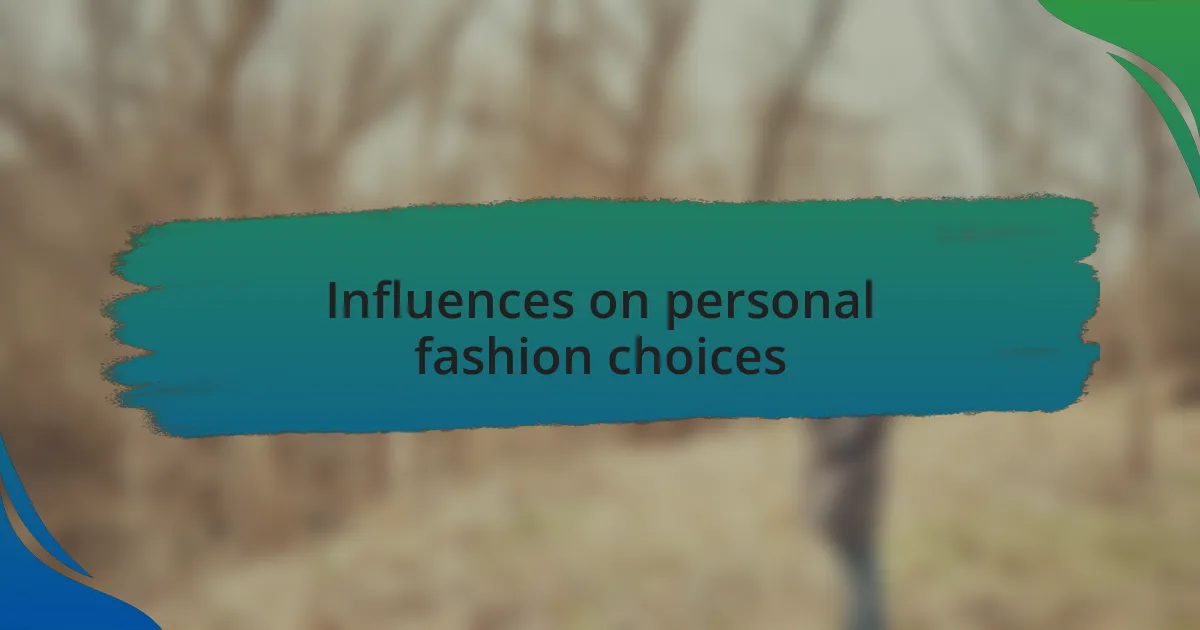
Influences on personal fashion choices
When I reflect on the influences that have shaped my personal fashion choices, I can’t overlook the power of family. My grandmother had a unique way of dressing that was both timeless and expressive. Watching her select outfits, I often felt that each piece told a story, a blend of tradition and personal flair that sparked my own creativity and introduced me to the idea that fashion can be a form of self-expression.
Friends and peers have also played a crucial role in my fashion evolution. I vividly remember a phase where I gravitated towards oversized sweaters because my best friend embraced a comfy, androgynous style that always seemed to exude confidence. It made me realize that our fashion choices can be influenced by the beauty we see in those around us—so, could it be that our social circles act as a mirror that reflects our own evolving tastes and identities?
Moreover, social media has dramatically reshaped how I approach fashion. Scrolling through platforms, I find inspiration in diverse aesthetics, from vintage revivalists to avant-garde enthusiasts. There’s something thrilling about discovering looks that challenge conventional norms. It almost feels like a constant conversation with the world, encouraging me to weave together influences from various cultures and eras. Each click pulls me deeper into a realm of possibility—how can I blend these ideas into my wardrobe to create a narrative that is distinctly mine?
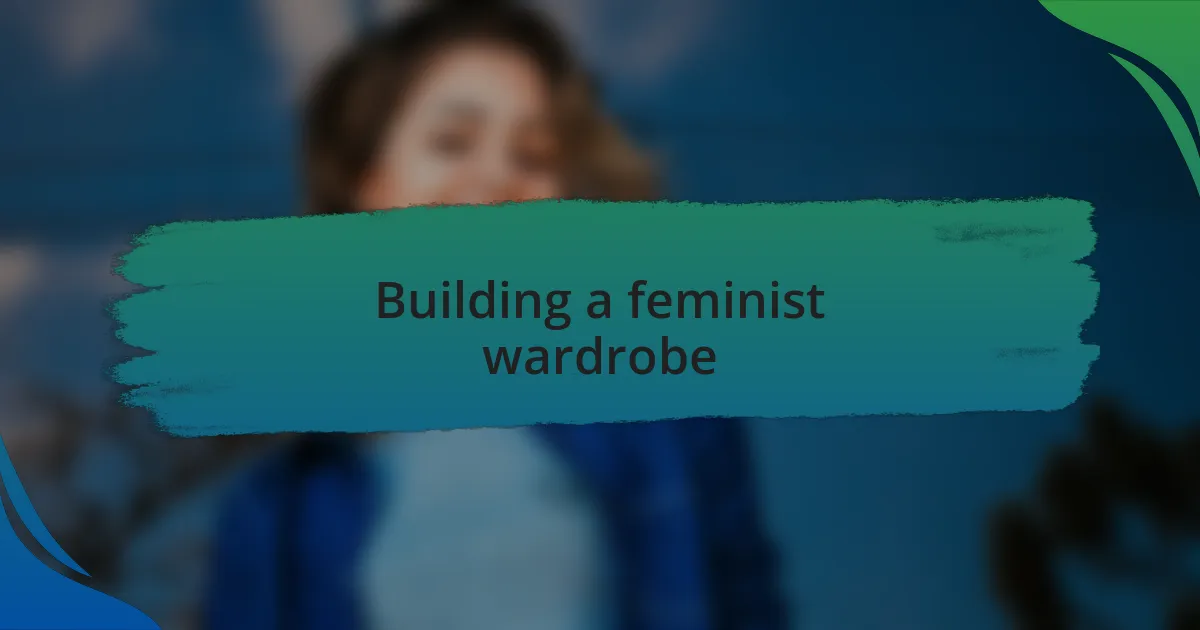
Building a feminist wardrobe
When I started building my feminist wardrobe, I knew it had to represent more than just fashion; it needed to reflect my values. I remember that first moment of going through my closet and removing pieces that didn’t resonate with who I was becoming. Each discarded item felt like shedding a layer of someone I wasn’t, making way for clothes that celebrated strength, individuality, and inclusivity.
I find joy in choosing pieces that are made ethically and sustainably, as this aligns with my belief in supporting fair labor practices. For example, when I discovered a local designer who sources materials from women-led cooperatives, I felt a connection that transformed my shopping experience into a meaningful exchange. Have you ever felt that rush of excitement when wearing something that not only looks good but also has a story behind it? It’s moments like these that reaffirm my commitment to mindful consumption.
Incorporating bold colors and patterns has become a subtle way for me to challenge gender norms and express my identity. I recall wearing a vibrant jumpsuit to a gathering where it sparked conversations about fashion as a form of resistance. It amazed me how a single garment could break down barriers and inspire dialogue. Isn’t it fascinating how clothing can empower us to advocate for change, both personally and socially?
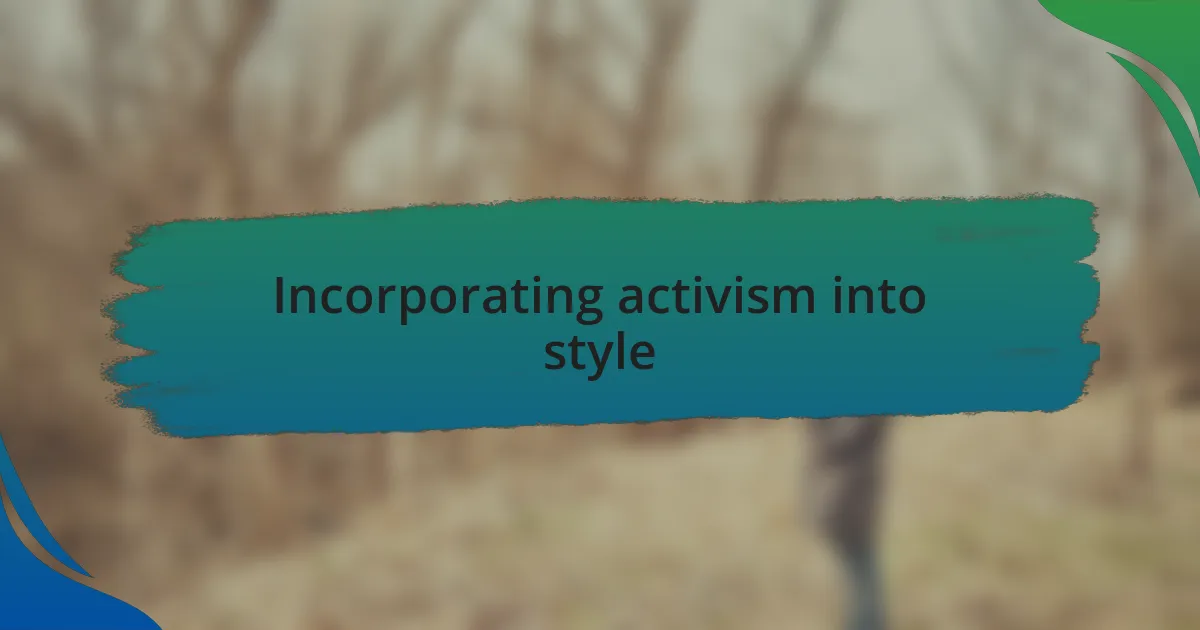
Incorporating activism into style
In my journey of merging activism with style, I’ve found that every piece I choose can serve as a statement. I remember the thrill of unraveling my new favorite shirt adorned with a slogan advocating for women’s rights; wearing it felt like joining a bigger conversation. Have you ever put on an outfit that made you feel like you’re part of a movement? That’s the power clothing holds.
I often seek out fashion that amplifies marginalized voices. I once came across a collection designed by artists from underrepresented communities. Supporting their work not only changed my wardrobe but also opened my eyes to the stories and struggles behind each piece. It’s a reminder that fashion can be a canvas for activism, isn’t it?
Furthermore, I take pride in using accessories to spark discussions about social issues. A pair of earrings that feature symbols of female empowerment once led to an inspiring conversation with a stranger at a café. That unexpected connection highlighted how style can ignite awareness and foster community, making activism an integral part of our daily lives. Isn’t it amazing how something as simple as a conversation starter can lead to change?
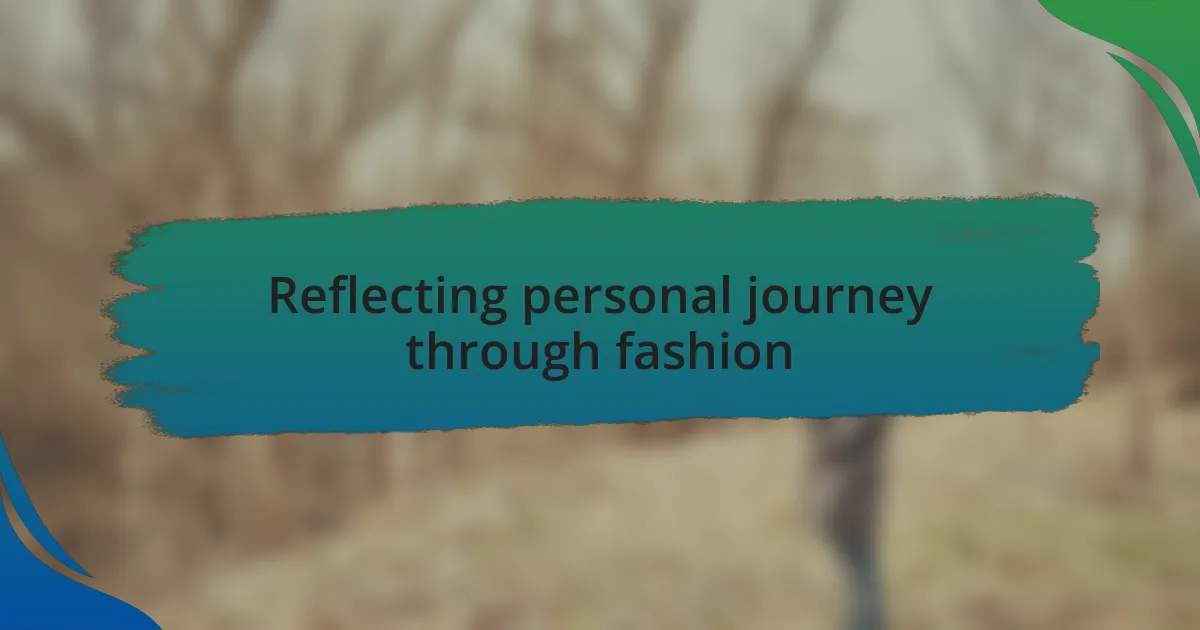
Reflecting personal journey through fashion
Fashion has always been a mirror reflecting my personal journey. I vividly remember the first time I wore a vintage dress that belonged to my grandmother, feeling her strength and resilience wrap around me like a warm embrace. It made me ponder, how many stories does each garment carry? Each time I slip into that dress, I’m not just wearing fabric; I’m honoring her legacy.
As I have grown, my fashion choices have shifted from merely aesthetic to deeply personal. I recall a time when I wore a boldly patterned jacket to a women’s march. The vibrant colors and prints were reminiscent of cultural movements I admired. It felt liberating, transforming my outfit into a tribute to diversity. Don’t you think it’s incredible how clothing can evoke such powerful emotions and connections to our past and present?
In many ways, fashion has become my creative outlet for self-discovery. I often find myself piecing together outfits that express various facets of my identity, whether it’s my love for the arts or my drive for social justice. One day, I donned a mix of patterns and textures that seemed chaotic yet beautiful, and it hit me then: just like life, fashion often invites us to embrace our complexities. Who would have thought that my wardrobe could tell such an intricate story?